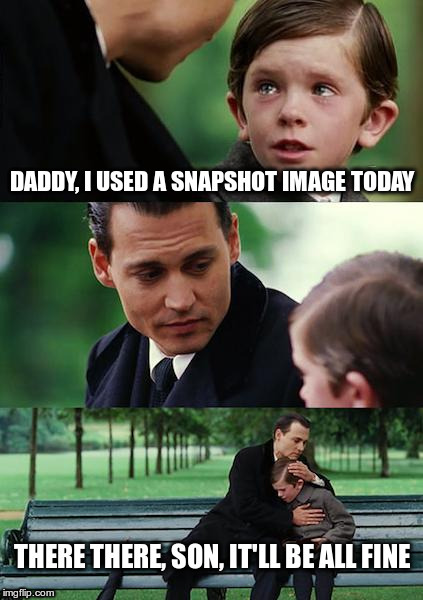Instead of a normal disclaimer, here’s the depcition of a potential outcome of using images posted here:
Just be sure to read everything to the end before doing anything, please. Also keep in mind that these are hot off the press, and not very well-tested. They may not work at all.
Now that that’s out of the way…
This is a snapshot for the upcoming 2.1.000 hotfix release. The list of things that have been fixed includes:
Unicode error causing tuner settings not to render correctly in the settings
When files with non-English names would appear in the stream, the tuner section in the settings would crash and no longer display correctly. This has been fixed in this snapshot.
FSAL indexing not starting when ORx is booted without a tuner
When ORx is powered up without a tuner, FSAL would not be able to connect to ONDD and thus be unable to receive notifications about incoming files. This has been fixed so that FSAL keeps trying to establish the connection until it is successful.
Not being able to select the LNB type in the tuner settings after changing it once
After setting LNB type once, the tuner settings form on settings page would always revert to the originally selected type. This is now fixed and changing the LNB settings should always work.
Incorrect handling of keep_formatting metadata flag
This is an internal change which will manifest itself as previously formatted content appearing with style overrides applied (e.g., wrong page widths, etc). This is because we worked around the buggy behavior from 2.0 release by intentionally using the wrong metadata on content. We will fix the content on final release of 2.1 but in meantime, using this snapshot will render content incorrectly.
Notifications never disappearing
In the previous release, notifications like “N items have been imported” lingered forever. Each new session (e.g., opening the GUI with a different browser or using Private browsing mode) would cause the notification to reappear. In this snapshot a 1-day timeout has been added which automatically clears notifications after the timeout.
System logs download replaced by diagnostics report download
In this snapshot, the system log and application log download buttons have been replaced by a single diagnostics download button (still named “Download sysem logs”) which collects complete diagnostics data from the device including memory usage, network device settings, and logs from key components on the system.
Download links
Lighthouse: Dropbox - Lighthouse images (snapshots) - Simplify your life
ORx: http://j.mp/orx-images
How to update Lighthouse
- Copy the .pkg file to USB stick
- Rename to wt200.pkg
- Plug the USB stick in and wait for all LEDs to turn off
- Unplug the USB stick immediately
- Wait for receiver to turn on
How to update ORx
In general, it’s better to create a completely new card. If you still wish to update rather than creating a new card, instructions are provided below. We won’t provide instructions for downgrading, as the instructions are exactly the same as for updating.
By using SD card
- Download ORxPi-update-2.0.002.zip
- Power off ORx
- Remove the SD card and open it on your PC
- Remove
zImagefile on SD card - Copy
zImagefile from the zip file to the SD card - Remove SD card from your PC safely
- Put SD card back into Pi
On running Pi
- Download ORxPi-update-2.0.002.zip
- Unpack
zImagefile and scp to Pi - Log into Pi
- As root, move
zImageto/boot/ - Reboot
How to restore Lighthouse to stable release
WARNING: While the system software can be restored to a previous release, databases cannot. You may experience glitches after a downgrade.
- Download the
boot.imgfile from the download link above. - Download the stable image from archive.outernet.is.
- Copy the both the .img file and .pkg file to an SD card, and rename the .pkg file to
outernet-rx.pkg. - Power down Lightouse
- Insert the SD card
- Power up Lighthouse
- When LEDs stop blinking, remove SD card
- Power-cycle Lighthouse


 . I have no idea how to use this card reader with Pi2.
. I have no idea how to use this card reader with Pi2.